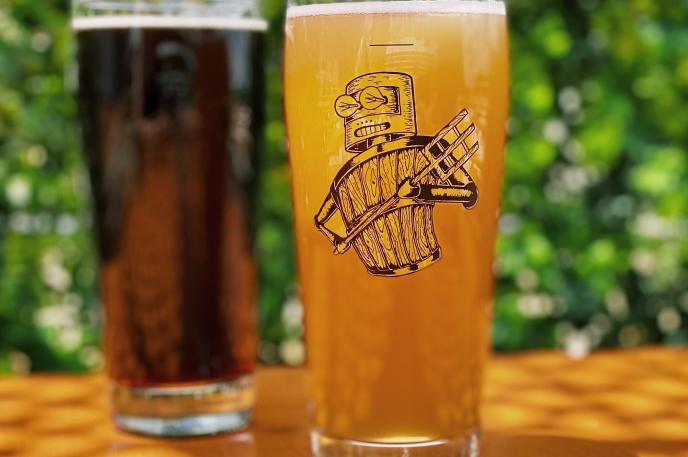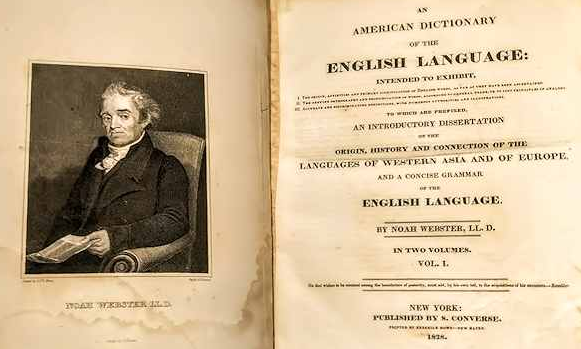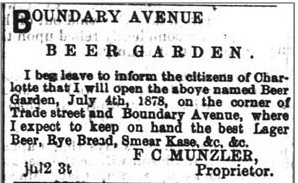
Historical hops: The birth of Charlotte's brewery boom
August 30, 2021
Charlotte has seen remarkable growth in craft breweries – places that make and sell their own beer onsite (Hartis 2020). The 2020 city directory lists nineteen brewers in Charlotte and five more in Mecklenburg County beyond the city limits, all established in the last decade. Beer brewing in Mecklenburg County didn’t begin yesterday, though. The history of brewing in Charlotte is a story of experimentation, immigrant expertise, entrepreneurship and prohibition.
 In his 1828 dictionary, Noah Webster of Connecticut defined beer as a beverage made "from any farinaceous grain, but generally from barley," but added, "beer is a name given in America to fermenting liquors made of various other materials." Barley was hard to come by, especially in the South, so North Carolinians tried fermenting apples, persimmons, and molasses into something fizzy with a kick. “My wife makes excellent beer,” began one story in the Catawba Journal (12/26/1826), showing what Americans called beer was usually made at home - and by women.
In his 1828 dictionary, Noah Webster of Connecticut defined beer as a beverage made "from any farinaceous grain, but generally from barley," but added, "beer is a name given in America to fermenting liquors made of various other materials." Barley was hard to come by, especially in the South, so North Carolinians tried fermenting apples, persimmons, and molasses into something fizzy with a kick. “My wife makes excellent beer,” began one story in the Catawba Journal (12/26/1826), showing what Americans called beer was usually made at home - and by women.
 In the 1860s, Martin Munzler became the first successful brewer in Mecklenburg County. He evidently brought the craft of making lager beer with him from his native Bavaria. During the Civil War years, he ran advertisements offering top dollar for barley. After the war, he, and then later his son, Frederick, sold their fermented product in a typically German setting: the beer garden, an outdoor place where families could gather and men could drink beer. It was located at the edge of town near the present-day intersection of McDowell and E Trade St. (Houser, n.d)
In the 1860s, Martin Munzler became the first successful brewer in Mecklenburg County. He evidently brought the craft of making lager beer with him from his native Bavaria. During the Civil War years, he ran advertisements offering top dollar for barley. After the war, he, and then later his son, Frederick, sold their fermented product in a typically German setting: the beer garden, an outdoor place where families could gather and men could drink beer. It was located at the edge of town near the present-day intersection of McDowell and E Trade St. (Houser, n.d)
By the end of the nineteenth century, Charlotte consumers could choose locally made and bottled beer, as well as products from Atlanta and Philadelphia. (Hartis, 2013, Chapter 2) In 1904, however, 18 years before the 18th Amendment banned alcoholic beverages nationwide, city voters approved an “anti-saloon” ordinance. Beer makers and distributors disappeared from City Directories for the next thirty years. Until after the national experiment with Prohibition ended. Covert home-brewing must have taken place during Prohibition, but without the opportunity to meet and share tips or to read how-to books on the subject, the quality must have varied. “Beer today is better than home brew was yesterday,” said one commenter after repeal. (Charlotte Observer, 10/17/1935, p.1)
 Atlantic Ale and Beer was made in Charlotte in the 1930s, but from World War II until the craft beer era, the beer drinkers of Mecklenburg chose from the same national and regional brands as everybody else.
Atlantic Ale and Beer was made in Charlotte in the 1930s, but from World War II until the craft beer era, the beer drinkers of Mecklenburg chose from the same national and regional brands as everybody else.
Makers of beer in the United States finally lived up to Noah Webster’s definition of beer by the late nineteenth century, then went back to brewing “various other materials” under the pressure of Prohibition. In the era of mass-produced beer after Prohibition, consumers drank products made from barley again. The growth of craft beer in this century has begun a new cycle of diversification, which will continue as long as consumers seek novelty more than familiarity.
Sources:
Daniel Anthony Hartis
- Charlotte Beer: A History of Brewing in the Queen City (2013)
- “A Look Back at Charlotte’s craft beer scene” Charlotte Observer (Web Edition) January 8, 2020
Jeffrey Houser, “The Munzler Lager Beer Brewery in Charlotte, North Carolina,” Charlotte Museum of History
--
This blog was written by Dr. Tom Cole, librarian at Charlotte Mecklenburg Library's Robinson-Spanger Carolina Room.
